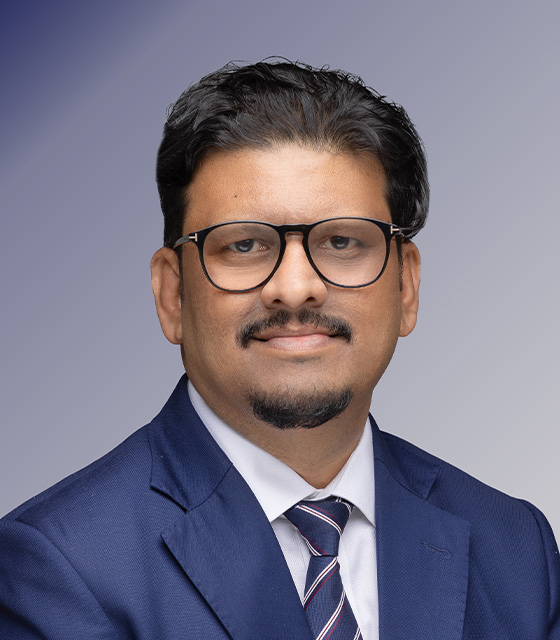Every year GTR gathers some of the most influential names in Asian trade finance to discuss the challenges and opportunities the market faces. This year we met in Singapore ahead of GTR Asia and, needless to say, the ongoing trade tensions, trade digitisation and regional economic integration featured strongly in the conversation.
Roundtable participants:
- Kai Fehr, head of trade, Asia Pacific, Wells Fargo
- Atul Jain, head of trade finance, Asia Pacific, Deutsche Bank
- Peter Jameson, Asia Pacific head of trade and supply chain finance, BAML
- Vishal Kapoor, Asia Pacific trade head, treasury and trade solutions, Citi
- Sriram Muthukrishnan, head of global transaction services, trade product management, DBS (chair)
- Michael Sugirin, global head, open account trade and trade implementation, Standard Chartered
- Sanjay Tandon, APAC head of product and propositions, HSBC
- Azim Walli, head of trade and supply chain finance products, Asia, MUFG
- Eleanor Wragg, senior reporter, GTR
Muthukrishnan: Macroeconomic shifts continue to affect the trade landscape in 2019 as trade tensions show little sign of abating. What impact are you seeing on trade flows this year in Asia as a result, and how has this changed since last year?
Tandon: The tension between the US and China certainly has an impact on the overall macro flows. It’s not just an impact on China flows going to the US or via Hong Kong; the shifting of supply chains is having an impact across the region. There is talk about supply chains moving to Vietnam, Cambodia, Bangladesh and India, especially in the garment sector. However, any major shift of capacity from China to these markets has yet to be seen. There is also the fact that there is not enough infrastructure to cope with the amount of supply that China commands today. We expect the current tensions to accelerate the pace of moving production to low-cost locations – which has already been happening over the past years. So far, what we have heard from the customers is that the 10% increase in tariffs can be absorbed by the supply chain, the consumers and the buyers. But the moment it gets to 25% it’s going to become extremely difficult. This is going to impact not only the sellers, but also the consumption side in the US which will lead to an increase in prices.
It’s not just about the shift in supply chains or how other economies might benefit – some of which will certainly benefit from the shift in supply chains. We also need to watch out for slowing GDP growth. China is a large market for many of the Asian economies. A significant slowdown in China’s GDP growth will in turn impact the growth in these economies.
If China’s GDP growth drops by one percentage point, it’s going to have an impact of 0.5-0.8 percentage points on other economies in Asia Pacific, which could offset the gains from any shift of supply chains from China to these economies.
We should also not forget about the fact that the tensions with China have been around the trade imbalance. Vietnam has already been in the news for putting in policies which support more trade through its economy, such as in the steel sector. How these imbalances are going to pan out in the future is yet to be seen.
Kapoor: Any change in the status quo leads to opportunities. What we are seeing is the Asia-to-Asia flow becoming very dominant. That business is growing dramatically, much faster than any other flow. We believe that creates tremendous opportunities for all the banks in the market.
While we haven’t really seen a shift of supply chains moving out of China, increasingly corporates are looking at other opportunities.
What we’ve seen across the clients is, yes there are certain markets that obviously are favourable in terms of their parameters and how they are growing. But a lot of the clients have focused on where they already are. So if the client is already present in the country, they are expanding operations there.
Walli: I think that’s absolutely correct. If you consider other agreements like the Comprehensive and Progressive Agreement for Trans-Pacific Partnership (CPTPP), or the Asia Pacific Trade Agreement (APTA), these Asia-centric agreements which continue to be adopted will foster further intra-Asia trade.
Add to the above promotion of intra-Asia trade, the Japan-EU economic partnership agreement, one of the most important bilateral trade deals by the EU, and the EU-Singapore free trade agreement are fuelling trade growth in and out of Asia.
Jameson: The way many of our clients have been looking at this is that everything has a cost. These are not just manufacturing outfits; some of them are highly specialised, technologically advanced supply chains. In the initial months our clients had the view that there’s a cost to carry, which is either the cost of the tariffs or the cost of realigning supply chains. In the coming months we’ll probably see that intensify quite a lot as the risk of that cost outweighs the cost of moving. The other distinction that I see is existing versus new. You’re absolutely right; we don’t see much shift out of the more problematic markets. But we are seeing clients take the opportunity to diversify what they do and where they do it. That’s probably something that didn’t just start with the tariff discussions, I think it was already in flight. But we are seeing that intensify now.
Muthukrishnan: If we take a slight step back and take a medium to long-term view, this trend is already in play. China has already made its policies clear. They want to move up the value chain and move away from low-tech engineering and manufacturing activities. This can be attributed to changing demographics where a lot of Chinese are no longer willing to work for low wages and move away from their hometowns.
This is why countries like Bangladesh, Vietnam and to some extent India, and Indonesia eventually, can be potential beneficiaries. Of course, water flows where there is least resistance and therefore Vietnam is currently the most favourable destination, whether from the point of view of demographics, costs or government policies.
In terms of the ease with which supply chains can shift away from China, I recently read a report highlighting that about 10% of China’s total exports to the US this year have been redirected to other countries during the January to April period. Of which, half of that actually moved to Vietnam. I do not see it necessarily as a negative because it aligns with the aspirations of China and the rest of the region, boding well for the further democratisation of supply chains.
These are longer term trends which are potentially being accelerated by current trade tensions. Even if the tensions ease, I believe these trends will continue, albeit at a different pace.
On a related topic, given the shift in supply chains, is this changing what corporates are asking of us as banks?
Kapoor: Things are changing rapidly for our clients and they are looking to us to help and support them. As they expand to new markets they need expertise, and they need help in the market. That is becoming a critical role and we see that happening a lot.
We are spending a lot of our time with our clients who are expanding or going from one part of Asia to another part which is relatively new to them. They rely on us to provide them with advice.
The way our clients are operating is changing – they are looking at their banks to help them support and grow their sales, not necessarily by providing just pure financing, but also by creating solutions that help them to understand their net worth and build their business.
Jain: Trade remains at its core a price times volume business. From a pricing perspective, things have been interesting. For example in China, where hundreds of billions of dollars of liquidity have been injected into the market in the past year, we’ve seen onshore margins compress significantly. However what we’ve seen as an offset to that is increased market and credit risk across the region, as well as a heightened review of current business setups, in which context the advisory-related trade needs of our clients across the region have also advanced. So yes, it certainly has changed what corporates are asking of us as their core trade partner.
The trade business has evolved in a way from being a very plain vanilla platform-type business on the one end, to a very complex, structured-type business on the other. We support our clients across this full spectrum, and don’t force them to pick and choose where and how we support them. Nonetheless our differentiation and success as a trade bank in this region has really been around the latter, which plays incredibly well to establishing ourselves with clients as they look to solve complex problems and navigate uncertainty.
From a volume perspective, we’ve seen overall market demand as largely benign in spite of heightened volatility, uncertainty and supply chain dynamics. In other words, we’ve seen more of a distribution rather than reduction of client flows, largely to the benefit of intra-emerging markets corridors, including of course intra-Asia.
Fehr: The main issue for me is the duration of the trade war. I recently met with multiple Wells Fargo clients across the US, from boot manufacturers to telecommunication equipment companies. The one common denominator is the angst around the duration of the trade war. I doubt that we will see a resolution to the ongoing trade war anytime soon. And if this is indeed the case our clients need to accelerate preparation for a prolonged situation of increased tariffs and obstacles to free trade. Out of the 15 clients I
spoke to in the US, 11 of them are already seriously considering rerouting their supply chains or have actually already changed their procurement. Those effects are irreversible.
I agree that this trend of shifting supply chains had already started before the trade war due to a growing middle class in Asia and changing consumer behaviour. The reality is that right now no other consumer base in Asia can replace the US consumption. And that is why the trade war will have a serious impact to the global economy if it is prolonged – and with no winner on either side.
Muthukrishnan: A fact that should create concern is that US consumer confidence is going down. While we often hear about the impact on China and the rest of Asia, the real concern is if the other side of the equation starts to weaken, then there will be no anchor left for the global economy.
Tandon: I take your point on the might of US purchasing power, but new markets and new ways of operating are key. One of the largest markets within Asia for China is India. That’s not going away. It’s a billion people with a middle class that is rising, and consumption is rising.
The rest of Asia still continues to grow. Even China continues to grow at about 6%. So opportunities to expand still exist.
One would expect that, as has been done in the past, there would be fiscal or monetary stimulus which would come into the market. The recent change in China on the lending interest rate regime is another example of that. China is making structural changes, and I think that’s an opportunity for all of us.
Muthukrishnan: Talking about Asian corporates, there are certainly underserved segments especially in the region. The world’s trade finance gap is estimated by the Asian Development Bank (ADB) to be US$1.5tn, with a large proportion stemming from emerging Asia. What are we seeing there? Are banks making progress in availing more financing options to SMEs?
For DBS, the SME segment is a key focus area. But what is the missing piece of action that SMEs potentially can offer to banks, or conversely, what is it that banks need to do to put more financing in the hands of these SMEs? Will that take the form of moving away from very conventional ways of assessing financing, or exploring alternative transaction-based mechanisms? Or enabling fintechs to do what they do pretty well, which involves coming up with algorithmic lending models – an area the banks are struggling with?
Sugirin: If you look at supply chain finance and how it came about, we’ve worked through large procurement centres and extended finance down to suppliers, which is a very secure and safe way to do business. But here in Asia we feel we’ve touched only the tier one supply base and those are in most cases still very large suppliers that are able to meet the orders of large buyers in the US and Europe. And the challenge is around going to the next tier down. The challenge is that banks are not able to connect the dots between the buyer down to the lower-tier suppliers. There are various industry consortiums trying at least from a messaging perspective to connect the dots between a buyer, supplier and the next tier supplier. We are working on a number of initiatives with fintechs around tokenisation, for example, but it’s not easy, from an onboarding perspective.
The other aspect is around pre-shipment. Pre-shipment has a very different risk, and I don’t think anyone around this table is willing to put the same dollar behind it at this point as we do with supply chain finance. Data and technology allows us to get there much faster than we do currently. However, it takes collaboration, be that with local banks or global banks.
Tandon: I agree with Michael. Supply chain finance usually focuses on the parts which the anchor corporate wants to cover. The US$1.5tn gap is in that long tail. To address this, we need to work on the willingness of the anchor clients to open up their data sets as well as the information flow. Let’s take for example logistics. Most of the providers are not large companies who are trucking goods around the space. These are individuals who own small fleets. They have to pay the drivers; they have to pay for fuel; they have to pay for everything on a daily basis. And if their payment is getting stuck in administrative issues for 45 days, that’s where the gap in financing gets created.
This is where the data sets and flow of information can help banks in putting solutions together. This is where some of the fintech intermediation is taking place. In my view, it’s not about fintechs taking over from banks. It’s about collaboration. In many markets, fintechs have neither the license nor the financial strength to cover the entire trade finance gap. There are a lot of opportunities for banks.
Muthukrishnan: That was exactly a solution we deployed for an automotive logistics client in China, enabled by a blockchain platform. It was a collaboration with a fintech and it did solve the problem for micro SMEs by cutting down time taken to reconcile their invoices and waybills from 45 days to one. For them, 45 days of liquidity is so precious. With SMEs, we talk about financing but sometimes it is simply inefficiency that is killing them. It dries up the working capital they could otherwise access. By making them more efficient, you can actually make them more robust.
I think that the time has come for us to look beyond anchor-led opportunities. The time has come to look at financing SMEs based on the portfolios they represent. The fact is that banks can do more by consuming data and making sense of it. If we have access to data, what are we doing with that data? And how are we making financing available based on that data? We’re still talking to SMEs about mortgaging their premises as collateral for financing. It’s time to evolve the way we finance SMEs and micro SMEs by looking at their buying and selling behaviour through a multitude of available data.
Walli: As transaction bankers we have to change our thinking. What we are talking about here is following the client journey and ecosystem partnerships. It’s about looking at channel platforms and ecosystem intermediation to leverage data all through the supply chain for client intelligence and predictive analysis, risk mitigation, etc. We are then in a position to provide deeper value.
Kapoor: I tend to agree with that, but I will share some of our experience. In this environment where there is so much tension our supply chain finance business has grown by over 20% this year. We see a lot of opportunities. The difference here is that in Asia we’ve got smaller suppliers who are joining the programme, but there’s still an incredible amount of untapped business that is still there for banks to capture.
Our philosophy and strategy is to work with the fintechs who have ideas, partner with them to find new ways of financing, because some of the deep-tier financing doesn’t fit into the more conventional bank financing modules that we follow. So, there’s opportunity on both fronts. The supply chain continues to grow and in the current environment we believe it’s going to continue to grow very rapidly in the next couple of years but at the same time we have opportunities in deep-tier financing as well.
Jameson: We have moved away from the train of thought that fintechs are going to eat the banks’ breakfast. We need them. If we think about what we do in the purest sense, we have balance sheets and we want to deploy them. We have to jump through all of these hoops of operational engagement with suppliers, even before we go into the two or three levels below. Fintechs are the solution to this. They’re also the solution to another problem which I think will be quite interesting, in that this cycle is different from previous cycles as it is the first shift that has happened since we’ve all de-risked. That traditional way of vertically trickling down the funding from banks to banks, to corporates to SMEs, many organisations have moved away from that and trimmed their correspondent banking model. Some of these fintech networks will be a solution to a problem we’ve all created in some ways, because we’ve moved away from that vast network that we had seven, eight, nine years ago.
Walli: I don’t think fintechs are necessarily just about disruption. Look at the NTP and what our government here is doing around the ability to source valuable information from a sanctions and KYC perspective and making these data points available to all of us. That is a pain point that we all succumb to and if a fintech can facilitate that, then that is a welcome offering as far as I’m concerned.
Tandon: Picking up on the regulations which have tied us in knots. So much data is available, from customs clearance to shipment of goods. We need to use data to manage AML; we need to consider automation to manage sanctions and other forms of financial crime. And that’s where I think collectively, we need to work together to approach regulators to develop new standards.
Fehr: Going back to the initial question of the US$1.5tn trade gap. This is an issue of funding the SME space. I do see the excitement that everyone has around DLT proof of concept deals. We are still far away from any meaningful step towards commercialisation of the technology. I don’t believe that big data, the token concept or the distributed ledger will close the trade gap. What will happen is that down the line a few sophisticated large multinational corporates will apply technology to single inter-country trade channels. So the Asian SMEs who require trade funding will still not benefit from the technology advances even when they become available.
Muthukrishnan: We’ve talked a lot about partnerships and that brings me onto the topic of ecosystems. How can we make the ecosystem sing and hum to address the problems that we have been talking about?
Fehr: I don’t think that distributed ledger technology actually works in trade for the foreseeable future. I don’t think this will actually work in my professional lifetime – simply because of the complexity of the global supply chains. I hope that I am wrong. The issue is that even if the technology is getting ready and we all here in the room are eventually on the same common platform, the jurisdiction and regulator in emerging markets are not. You not only need the banks, the importer and exporter on the e-platform, you need all parties of an ever-changing global supply chain signed up. That is a Herculean task and will take much more time than people in my view anticipate. That said, I am spending more time on areas such as OCR and AI and I am very optimistic here. This area will revolutionise trade in the near future and will benefit clients through more competitive pricing and faster turnaround of transactions.
Tandon: I agree that it’s not going to happen tomorrow. Distributed ledger or blockchain is a technology, as a means to an end. The key for us is to question why we need that paper.
At HSBC, letters of credit and documentary trade are a very significant part of our revenue base. However globally, documentary credits form only 20% of global trade settlements and remain very paper intensive. It’s something which we as an institution would continue to lead to transform, working with our clients, industry partners and regulators in multiple markets to really make that change. The regulators are very open to it, although I think it’s left to us to approach them about these changes. It is a slow transformation but that’s not to say it’s not going to change.
Kapoor: There is a change happening, and that change is going through different forms and shapes in various places. There are different forms of technology that will keep coming in but the most important thing is the banks should be ready to adapt their technology. Some banks are ahead in terms of centralising and standardising processes. Others are still trying to get there. If you want to go to straight-through processing it’s very important that you have more standardised processes.
We took over the challenge of digitising our trade business about two years back. We said, let’s look at all the means to which we can get our clients to give us their instructions in a way that we can process the transaction straight through. So in different shapes and forms through our electronic platform, we have achieved this to the extent that 71% of all our transaction come in a way that I can process straight through. Trade is always more complex but it is doable. It is important for banks to move to straight-through processing, otherwise the cost and the regulatory work involved in trade finance is going to become completely uneconomical for banks around this business.
Tandon: Two markets are really driving this change, China and India. If you look at India with the advent of GST, every company greater than US$15mn of turnover must issue e-invoices. Any movement of goods domestically, exceeding 5km, has to have an e-waybill. The transparency this is creating is forcing us to make changes in terms of how our solutions work with these systems and use this data for risk management, replacing the copy of an invoice providing little comfort. The same goes for China where there is a requirement to check the e-tax systems. As simple as the open account invoice financing is, we as institutions have made it so complex. We need to leverage these new initiatives to simplify it all. That will reduce the costs for the SMEs.
Muthukrishnan: The other big trend that we’re seeing is on sustainability. Blockchain, for example, enables traceability. But that again is not the only answer. How can we work together whether with corporates or within banks to make this a better world?
Fehr: This is a topic close to my heart: doing what is right from a bank perspective. The issue is how to translate a sustainable due diligence into the transaction banking fast-turning hamster wheel. We do not have much time to evaluate whether a transaction originates from a sustainable source or not. On a project financing you apply the Equator Principles with a detailed due diligence. That kind of due diligence is not possible when you handle an open account transactions or a letter of credit within a few hours.
Meanwhile, consumers want to know what they eat. Or how is my shirt produced? Does it come from a sustainable source or from someone whose manufacturing site will collapse and jeopardise workers? Is there palm oil in my food and does that palm oil contribute to deforestation? These questions are asked in particular by the millennials. And they are right to ask.
Clients are responding to this too. And our industry has readily available tools such as the sustainable shipment letter of credit developed by the Banking Environmental Initiative (BEI) which all banks can adopt. The basic principal of an attached certification will soon be launched for open account trade flows.
Muthukrishnan: When I speak with corporates, the lack of direction in terms of a clear set of global standards is often raised. They want to know how we can get to an acceptable global industry standard. We have a role to play in supporting that. Last year, we partnered with rubber franchise Halcyon Agri, to co-create a rubber trading platform called HeveaConnect. How that works is that in the past, if you wanted to source rubber for manufacturing tyres, there was no way of knowing where it came from or how it was processed. Now you can track and trace it back to the plantation using RFID. This is where the value is, and I think many people are willing to pay a premium just to support sustainable practices. Therefore, we can actually marry commercial interests as well as socially responsible principles and make something good come of it.
Tandon: It works well for commodity trade. The manufacturing cycle could be very different because you need to address it at source. That’s where a specific industry and a client-led approach work much better. There are industry practices that we as an institution subscribe to. We have partnerships with institutions like WWF and the Apparel Institute to look at how the entire ecosystem of the apparel industry works and where the sources of pollution and carbon emissions are. It’s important to reach down to the source, especially in manufacturing supply chains which are fairly dispersed as is the case for textiles or garments. We are working with industry leaders and the people who set standards within these industries to then adapt our solutions to each one of them. Technology may obviously help but the first thing is to set the standards.
Jameson: The sustainability topic clearly has an element of doing the right thing and an element of business case. Until the last couple of years it was probably more motivated by the ‘do the right thing’ angle. Now, when I talk to clients and investors, it’s very much becoming a business case because of the risk of not getting clearer measures around sustainability and integrating them. I recently read that a quarter of 25-year-olds will put sustainability before profit when making investment decisions, and that, combined with the reputational risk of not doing what’s expected of us, is going to force us more down this path.
Jain: I agree. Sustainability sits hand-in-hand with long-term value maximisation. It’s not only the right thing to do, but also a source of competitive advantage today, and competitive necessity in the future, for banks. I don’t see the point in manufacturing a collaborative effort around this. If certain banks fail to see value in operating sustainably, they need to listen more closely to their clients, shareholders, and future employees, and the banks who do get it shouldn’t be held back by the slowest or most resistant amongst us to change.
GTR: What is the general feeling around future-proofing the industry? Given the multiple shifts underway, to what extent do you feel that the industry is going to remain fit for purpose in the future? Is everything in place, because at the moment a lot still feels like it is up in the air?
Jain: Yes, we have industry partnerships. Yes, we have proofs of concept. But I do feel there’s much more focus on putting out press releases than innovation that can scale. This goes back to what Kai alluded to in the context of blockchain: lots of cooks in the kitchen, each optimising their own dish while losing sight of the meal.
In trade, there’s currently significant interest in the market to promote fintech lending platforms as an alternative to traditional working capital finance, even though many of these companies are light on tech and largely built around providing securitisation-backed financing to clients. Trade banks understand risk mitigation, regulation, and client needs better than anyone, and ultimately that’s the experience society needs to help advance the industry in a safe and sustainable way.
More generally, there seems to be a belief that innovation within banks is a hopeless pursuit. But everyone sitting here works for a traditional bank. I feel like we still have lots to offer, but need to be given a more genuine opportunity to disrupt ourselves. Ironically if you look at the tech sector, the folks driving disruption are the well-entrenched US$100bn-plus market cap names that have had the freedom and support to use their resources to consolidate markets, which we’ve seen them do with great speed and success.
Sugirin: What you’re trying to solve for is how to expand our reach, expand our capabilities and expand our ability to reach the small SMEs that we’ve not been able to access before because we never had this visibility. We had only been able to finance what we could see but we were never able to see the next tier down or the third tier down. Whether it’s blockchain, data, insights or foresights: at the end of the day, fintechs put this into bundles to get us to where we’re trying to get to and reach that last mile.
Tandon: Just to build on that, why does the gap exist? The gap exists because of risk appetite or lack thereof. If you look at the UK open platform banking that they have set up, this is about exactly this. It provides access to data for every SME in the country. That is what’s going to create that visibility for the banks to create capacity where it’s necessary. This is where regulators need to step in.
Muthukrishnan: I think that we are moving in the right direction with regulators. Closer to home in Asia, I think the initiatives that regulators are sponsoring, whether it’s Singapore’s NTP, whether it’s the Greater Bay Area, whether it’s the blockchain trade finance initiative in China, these are all moving in the right direction. The question is, are we moving fast enough?
Secondly, it’s not just about whether we can close the gap; it is more about how we actually understand our customers. If we keep building products for the 60-year-old entrepreneur who has a big balance sheet and the net worth to show for it, we will continue building conventional products. The moment we can talk about how to finance a newer startup with red on the balance sheet today, whose CEO is 24 years old, but with a business growing by 50%, 100%, 200% every month, it’s a completely different paradigm. We haven’t yet cracked it but we’re on a journey. And I think fintechs are helping us. A change in mindset is helping us. Data has become the new gold. We haven’t ever looked at data in the way we look at it today.
Sugirin: We’ve been financing the import and export of goods for the last hundreds of years. But there’s a service economy that is growing exponentially, much faster than the goods space. And 3D printing is just going to accelerate this overnight. The thing with disruptions, all these technologies and the data, is that nobody is really capturing these transformations right now in terms of financing. If you think about a service-based industry, such as human services resources, trade has a very, very low percentage of penetration, we’re a fraction of it.
Walli: If you look at a lot of trade transaction banking business writing strategies, we still don’t recognise service as a trade. Is this something that we can finance in our regular course of business in transaction banking? If something goes wrong can I actually seize an asset? Can I liquidate the receivable and is there an acceptance of the receivable? Those are the questions that we normally ask ourselves as transaction bankers.
Going back to the risk side and the gap, one of the things that I find encouraging, and I admit that it’s very nascent, is if you take a look at our credit risk departments which have historically made credit decisions on balance sheets and income statements, there is a slow shift towards event financing and historical behaviours. What’s the history of DSOs? What’s the history of credit disputes? What is the company’s supply chain policy? I think factoring some of that in the credit decisioning could potentially help in certain financing decisions for certain companies or sectors where financing wasn’t available before.
Muthukrishnan: The trade finance gap exists because we look at finance with very conventional eyes. I think the ecosystem approach or looking at new ways of financing services will help us to actually reduce the gap. Maybe the gap exists because we kept looking in the direction of commodities and goods and that’s what we limited ourselves to in the past. Unless we give value to data, and unless we change the way we look at customers, it will be difficult to bridge the gap.












